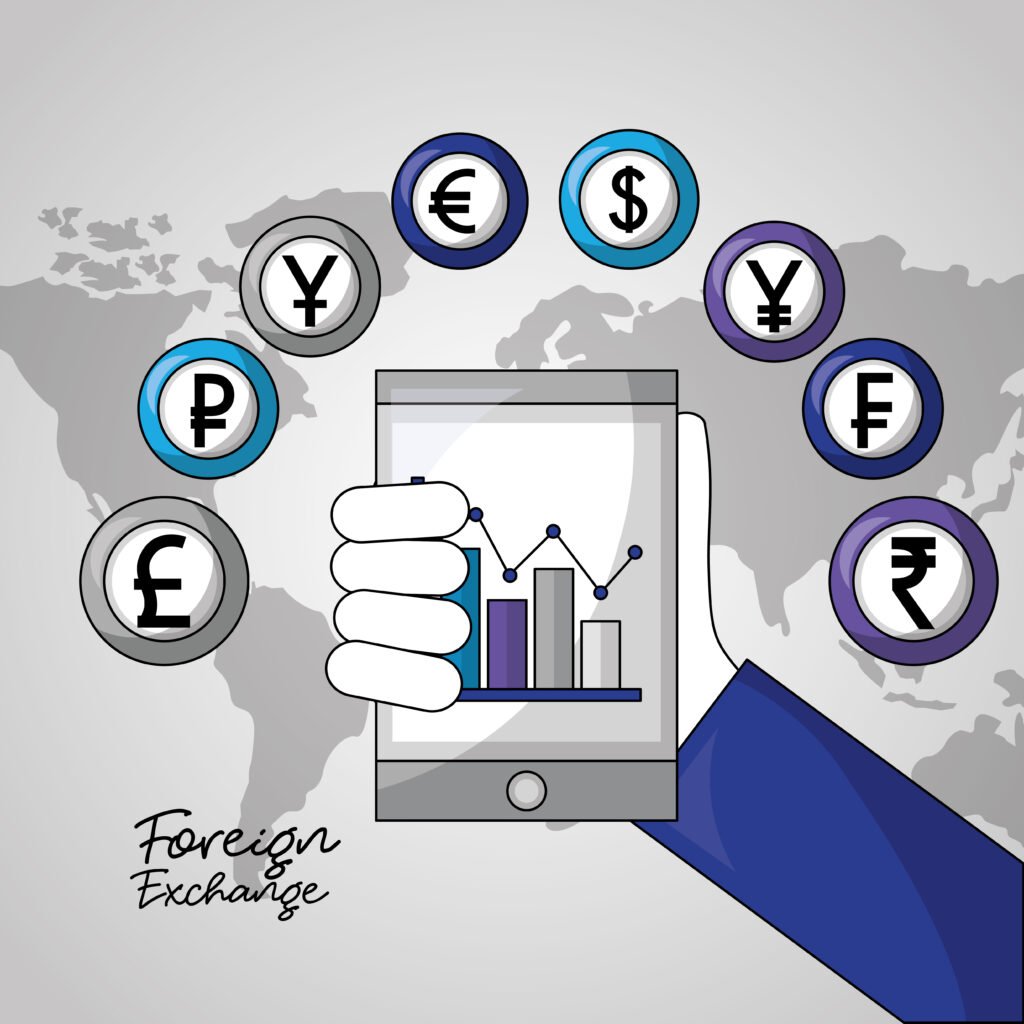Bank Transfer vs. Online Services: Which is Better for International Transfers?

Introduction
Sending money internationally is an essential need in today’s interconnected world. Whether it’s for personal reasons like supporting family abroad or professional purposes like managing cross-border payroll, choosing the right method of transfer is critical. Two primary options dominate this space: traditional bank transfers and modern online money transfer services.
This article will compare these methods in detail, helping you decide which is better suited for your specific needs.
What Are Bank Transfers?
Bank transfers involve sending money from one bank account to another, either domestically or internationally. For international transfers, most banks rely on the SWIFT network, which connects thousands of financial institutions worldwide.
Types of Bank Transfers:
- Wire Transfers: Often used for international transactions, involving intermediary banks to complete the process.
- ACH Transfers: A cheaper and slower alternative for domestic payments.
Banks are considered reliable and secure but may come with higher fees and slower processing times for international transfers.
What Are Online Money Transfer Services?
Online money transfer services have emerged as a game-changer in the financial industry. They allow users to send money across borders via digital platforms, often at a lower cost and faster speed than banks.
Popular Examples:
- Wise (formerly TransferWise): Known for transparent fees and mid-market exchange rates.
- PayPal: Convenient for individual transfers and small businesses.
- Revolut and Remitly: Specialize in international money transfers with added benefits like real-time tracking.
These services are designed with user convenience in mind, offering apps and websites for seamless transactions.
Key Differences Between Bank Transfers and Online Services
1). Speed of Transactions:
- Bank transfers may take 2-5 business days for international payments.
- Online services often process transactions within minutes or hours.
2). Costs and Fees:
- Banks charge higher fees, including transfer and intermediary bank fees.
- Online platforms typically offer lower fees and better exchange rates.
3). Accessibility:
- Banks require account details and may involve in-person visits.
- Online services offer apps for quick and easy transfers.
4). Exchange Rates:
- Banks often add a markup to exchange rates.
- Online platforms provide near mid-market rates, saving money.
Advantages of Bank Transfers
- Reliability: Bank transfers are well-regulated and trusted by millions.
- Security: High compliance standards protect funds during transactions.
- Large Amounts: Ideal for significant transactions, such as property purchases or business deals.
Disadvantages of Bank Transfers
- Cost: Transfer fees and poor exchange rates make them expensive.
- Time: Processing international transfers can take several days.
- Complexity: More details and documentation may be required.
Advantages of Online Money Transfer Services
- Cost-Effective: Lower fees and better exchange rates.
- Speed: Instant or same-day transfers in many cases.
- Convenience: Intuitive apps and websites for easy access.
- Transparency: Clear breakdown of costs upfront.
Disadvantages of Online Money Transfer Services
- Transaction Limits: Some platforms cap the maximum amount you can send.
- Dependence on Technology: Requires internet access and familiarity with apps.
- Business Suitability: Not always the best option for high-volume corporate transactions.
Cost Comparison: Bank Transfers vs. Online Services
Let’s examine the cost of sending $1,000 internationally:
- Bank Transfer:
- Transfer fee: $25
- Exchange rate markup: 2%
- Total cost: $45
- Online Service (Wise):
- Transfer fee: $5
- Exchange rate markup: 0.5%
- Total cost: $10
This example highlights how online services are often significantly cheaper.
Speed of Transactions: Which is Faster?
When it comes to speed, online services typically have the upper hand over traditional bank transfers. Here’s how the two compare:
- Bank Transfers:
- Domestic Transactions: Usually processed within 1-2 business days.
- International Transfers: Can take 2-5 business days, depending on the country and intermediary banks involved. Some transfers might experience delays due to time zones, holidays, or regulatory checks.
- Online Money Transfer Services:
- Instant Transfers: Many platforms like PayPal or Revolut offer near-instant transfers for supported currencies.
- Same-Day Transactions: Services like Wise typically complete transfers within hours or on the same day for most currencies.
- Exceptions: Certain currency corridors or bank processing times can still cause slight delays.
For urgent transfers, online services are generally faster and more reliable in delivering funds promptly.
Security and Fraud Risks
Security is a major consideration in financial transactions, and both bank transfers and online services have measures in place to protect users. However, the level of security and the associated risks differ.
- Bank Transfers:
- Security Measures: Banks are highly regulated and follow strict compliance standards, such as KYC (Know Your Customer) and AML (Anti-Money Laundering) procedures.
- Fraud Risks: While relatively secure, bank transfers are not immune to scams, such as phishing emails or fraudulent account information.
- Traceability: Transactions are easily traceable through the SWIFT network.
- Online Money Transfer Services:
- Security Features: Most platforms use encryption, two-factor authentication (2FA), and fraud detection algorithms to protect transactions.
- Fraud Risks: Dependence on digital platforms makes them a target for cyberattacks, but modern services invest heavily in cybersecurity.
- User Vigilance: Consumers need to ensure they’re using official apps or websites to avoid falling victim to phishing attempts.
Tips to Avoid Fraud:
- Verify recipient details carefully before transferring funds.
- Use secure internet connections when accessing banking or transfer services.
- Be cautious of unsolicited emails or calls claiming to be from your bank or transfer service.
User Experience and Accessibility
Ease of use and accessibility are essential factors, especially for individuals who are not tech-savvy or for those sending money frequently.
- Bank Transfers:
- Process: Often requires detailed recipient information, such as IBAN, SWIFT codes, and bank details, which can be cumbersome.
- Accessibility: While online banking has improved accessibility, certain tasks, like initiating large international transfers, may still require a visit to the bank.
- Online Money Transfer Services:
- Process: Designed for simplicity, with most requiring just an email address or phone number of the recipient.
- Platforms: User-friendly apps and websites allow transfers to be completed in just a few clicks.
- Global Reach: Many services offer multi-language support and are accessible worldwide.
For sheer convenience and ease of use, online services typically outperform traditional bank transfers.
Which Method is Better for Businesses?
Businesses often need to manage large, frequent, or cross-border transactions, and the choice between bank transfers and online services can have significant financial and operational implications.
- Bank Transfers for Businesses:
- Pros:
- Ideal for high-value transactions.
- Established reputation and trust.
- Integration with business bank accounts for seamless accounting.
- Cons:
- Higher costs and slower speeds.
- Limited flexibility compared to modern digital platforms.
- Pros:
- Online Services for Businesses:
- Pros:
- Lower fees and better exchange rates, reducing overhead costs.
- Quicker transfers, allowing for efficient cash flow management.
- Some platforms, like Wise for Business, offer tools for managing payroll and invoicing.
- Cons:
- May have limits on transaction amounts.
- Certain platforms are not yet universally accepted for business-to-business transactions.
- Pros:
Factors to Consider for Businesses:
- Volume and frequency of transactions.
- The importance of speed and cost savings.
- Compatibility with existing financial systems.
Real-Life Scenarios
Let’s explore two practical examples to understand the choice between bank transfers and online services:
- Scenario 1: Individual Transferring Funds Abroad
Maria needs to send $1,000 to her family in the Philippines. She compares options:- Bank Transfer: Fees total $45, and the funds will take 3 business days to arrive.
- Online Service (Remitly): Fees are $10, and the money will be delivered within hours.
- Maria opts for the online service due to lower costs and faster speed.
- Scenario 2: Business Managing International Payroll
A small e-commerce company based in the US needs to pay its remote employees in multiple countries. The monthly payroll totals $50,000.- Bank Transfer: High fees and poor exchange rates increase overall costs by $1,500.
- Online Service (Wise for Business): The company saves over $1,000 in fees and receives transparent exchange rates.
- The company chooses the online service to maximize savings and efficiency.
Future Trends in International Money Transfers
The international money transfer landscape is rapidly evolving, with new technologies and innovations shaping the future. Key trends include:
- Blockchain Technology:
Blockchain-based solutions, like Ripple, are offering faster, cheaper, and more transparent cross-border transactions. - Cryptocurrencies:
Digital currencies like Bitcoin and stablecoins are gaining traction for international payments, providing an alternative to traditional systems. - Advancements in Fintech:
Fintech companies are introducing AI-driven tools for better rate predictions and fraud prevention. - Regulatory Changes:
Governments are working on streamlining regulations to facilitate faster and more secure global transfers.
These trends are set to revolutionize how individuals and businesses transfer money across borders.
Conclusion
Choosing between bank transfers and online services for international transfers ultimately depends on your specific needs. Bank transfers offer reliability and security, making them ideal for large transactions. On the other hand, online services provide cost savings, speed, and convenience, making them perfect for individuals and small businesses.
By considering factors like cost, speed, and security, you can select the method that best aligns with your requirements.
FAQs
- What is the biggest advantage of online money transfer services over bank transfers?
Online services typically offer lower fees, faster transactions, and better exchange rates. - Are bank transfers more secure than online services?
Both methods are secure, but banks rely on stringent regulations, while online services use advanced encryption and authentication technologies. - How do exchange rates affect the total cost of international transfers?
Poor exchange rates can significantly increase costs, making it essential to compare rates before transferring. - Can I transfer large amounts using online services?
Yes, but some platforms may have limits. For very large amounts, bank transfers might be more suitable. - What is the most cost-effective way to send money internationally?
Online money transfer services are usually the most cost-effective due to lower fees and competitive exchange rates.


 English
English 




































































































